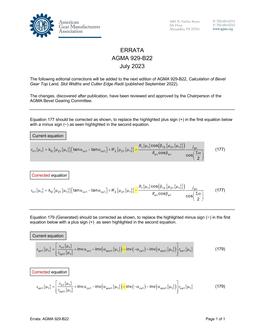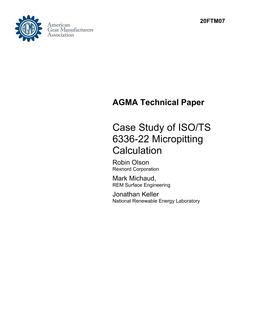-
-
Available Formats
- Availability
- Priced From ( in USD )
-
Available Formats
-
- Immediate download
- $85.00
- Add to Cart
-
- Printed Edition
- Ships in 1-2 business days
- $85.00
- Add to Cart
Customers Who Bought This Also Bought
-

AGMA 18FTM25
Priced From $85.00 -

AGMA 929-B22
Priced From $310.00 -

AGMA 231.52
Priced From $70.00 -

AGMA 20FTM07
Priced From $85.00
About This Item
Full Description
Due to the complexity of spiral bevel gear machining, the cutting tools can be a significant cost of gear manufacturing. Unlike the price of the material which is fixed by the market, the cost of tooling and subsequent re-grinding can be reduced through reducing tool wear and increasing tool life. Current methods for making these improvements include costly trial-and-error techniques. These can be expensive, time consuming and may require use of production equipment, disrupting work-flow and product delivery.
This work details an alternative approach to physical testing for predicting and reducing tool wear using the finite element method. This virtual design approach utilizes real-world cutting tool geometry, automatically generated gear blanks and known process kinematics to simulate the cutting process. The cutting geometry was scanned with a combination of laser and MRI techniques and then converted into a 3D CAD model for use in modeling. Gear blanks were automatically generated using parametric inputs and material removed to begin simulation mid-process to reduce simulation time. The kinematics for spiral bevel machining were implemented for the non-generating motion and are able to model both face-milling and face-hobbing machining methods. The simulation results included tool temperature and tool stress, which have been shown to be the main drivers in tool wear.
To validate the modeling approach, experimental tests were run for a variety of edge preparations, feeds and speeds. The experimental results collected included forces, tool wear pictures and chips. The comparison of the simulated and experimental results found good correlation for forces and between tool wear marks and the temperature and stress contours on the tool. The chip shape was also found to be similar. Based on this comparison, suggestions for reducing tool wear with the modeling approach are made. Additionally, the lessons learned, potential benefits and pitfalls of this approach to tool wear reduction and future work are summarized.





